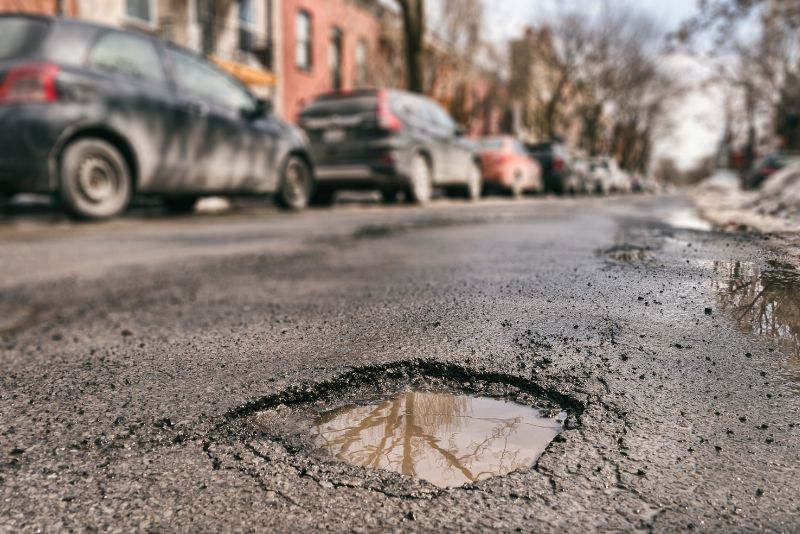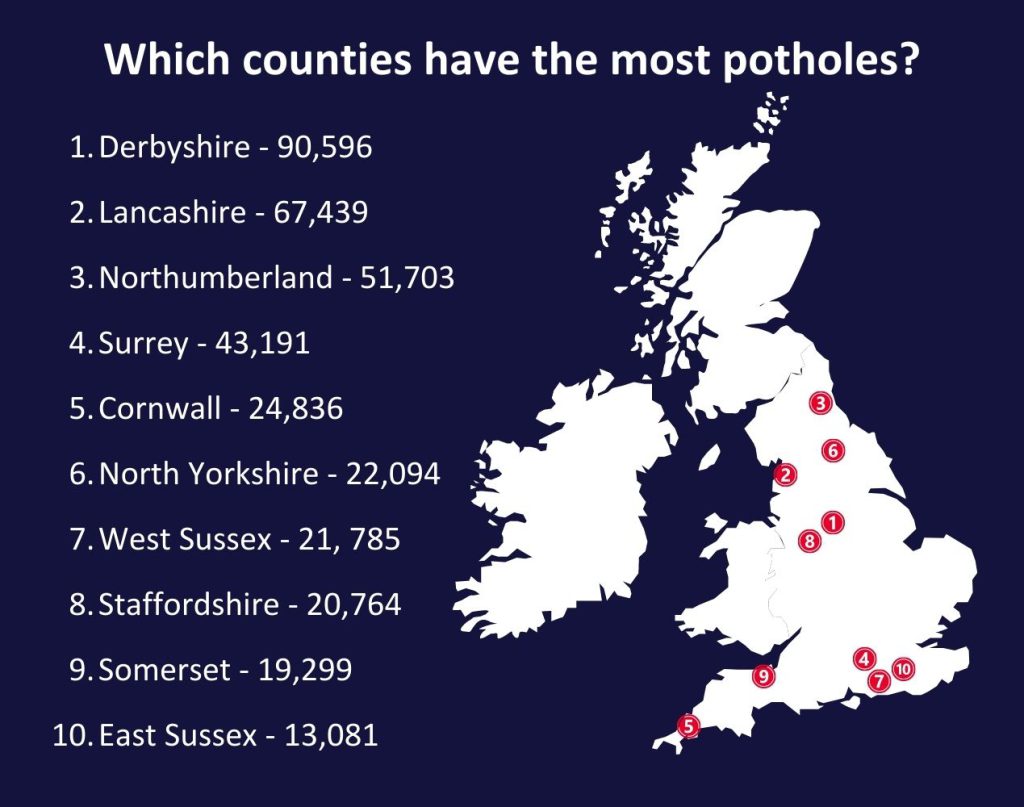£300m spent by councils on pothole claims

Potholes – at best they’re a nuisance and at worst they’re a danger. Whether you try to avoid them, or you’re forced to drive over one, potholes pose a serious risk to motorists, other road users and pedestrians, and can cause severe damage to your vehicle.
The latest figures show that a staggering £11.6 million was paid out to motorists, cyclists and pedestrians for injuries and damage in the past year! It’s no wonder then that councils have spent almost £300 million on pothole compensation claims over the last 10 years, a total that could fill five million potholes.
Meanwhile, Department for Transport (DfT) data shows that over 2,000 people have been seriously injured – including 94 killed – in accidents on badly maintained roads with potholes, loose gravel and unusual cambers in Britain since 2013.
In light of these shocking statistics, the AA is campaigning to make 2023 ‘The Year of the Pothole’! Read on to find out how you can get involved and help improve Britain’s roads.
Cold and wet weather can make roads more susceptible to potholes
What causes potholes?
A pothole is a depression in the road surface caused by wear or sinking. They start as cracks in the road, which expand with the friction from cars on the road. When water seeps into these cracks, it can freeze and then thaw, turning the crack into a cavern – aka a pothole.
With 40 million cars on Britain’s roads, there will of course be wear and tear to the tarmac. But the UK’s cold and wet climate means our roads are particularly susceptible to potholes.
Unfortunately, it’s easy to hit one without seeing it first! Be extra careful after spells of rain followed by cold temperatures. You should also be wary of puddles, which can hide large potholes from view. If you’re driving in the dark, potholes can be even harder to spot, so make sure your windscreen and headlights are clear, to give you an unimpaired view of the road ahead.
The worst areas of the UK for potholes
A new map of the potholes plaguing Britain’s street lays bare the issue. The figures, obtained through a series of freedom of information (FOI) requests, reveal that Derbyshire is the worst-affected county, with more than 90,000 potholes reported.
The data also showed that some councils took more than 18 months to fix some potholed roads, with residents in five areas forced to wait more than 400 days!
And, when it comes to THE worst road in Britain for potholes, that title goes Seawick Road, in St Osyth, where hundreds of craters cause havoc on just a 150m stretch. Residents of this seaside community in Essex say taxi drivers refuse to come to their doors and worse yet, emergency services struggle for access.
 Courtesy of ThisIsMoney.co.uk
Courtesy of ThisIsMoney.co.uk
How can potholes damage cars?
While wheels are designed to withstand a bit of wear and tear, potholes can seriously damage your tyres, including sidewall bulges, tread separation, or even punctures. Deep potholes could even make the rim of the metal wheel bend and completely distort the shape of it. In some cases, this damage cannot be repaired, and you’ll need to replace the whole wheel.
Potholes can also damage your suspension and your wheel alignment, with possible knock-on effects to your steering, especially if you hit them at speed. Plus, even if you approach a deep pothole slowly, that can still sometimes impact parts of the undercarriage, or even dent or damage your vehicle’s exhaust pipe. In the worst-case scenario, a damaged exhaust can lead to a complete loss of power.
Then there’s incidents where a pothole has exacerbated existing issues, such as turning a small chip in the windscreen into a huge crack, or where drivers have swerved to avoid a pothole but ended up in collisions or lost control of the vehicle.
The AA reports that the number of pothole-related breakdowns has increased by nearly a third in a year: callouts from drivers whose cars were damaged by poor road surfaces reached 52,070 last month, up 29% on April 2022. This means that 1,735 drivers every day have had their vehicles significantly damaged by the poor state of the roads.
What’s more, the RAC found that instances of damaged shock absorbers, broken suspension springs and distorted wheels are at their highest level since 2021 – all issues most likely to be caused by bad road surfaces.
How to safely drive over potholes
It’s natural to want to avoid a pothole in the road, and drive around it to avoid both the discomfort and the potential damage it could cause. However, you should only manoeuvre around a pothole if it is safe to do so – make sure to assess the conditions around you and consider other road users and pedestrians.
If you are unable to get around a pothole safely, try to slow down before you hit it. Don’t brake or swerve suddenly, as this can cause more damage to your tyres and be dangerous to other road users. Keep both hands on the steering wheel, as the impact of the pothole could affect your direction of travel.
In general, pay attention to your tyres. You should check your tyre pressure and tread regularly, looking out for any signs of bumps, bulges, or dents in the tyre wall, but especially if you recently hit a pothole.
Insuring against pothole damage
If you do end up with damage to your vehicle because of a pothole, don’t stress! Comprehensive motor cover should cover you for pothole damage – but just as important is legal insurance. This will cover costs in pursuing the Local Authority if necessary. If you don’t have this already, simply give your local branch a call and they will be happy to talk you through this.
If you do find that your car is damaged, and you want to claim compensation – take notes and photos if it’s safe and possible to do so. If the pothole has already been reported by another road user, you should be able to make a claim with the agency that maintains that road.
Even if you decided not to make a claim from the government or on your insurance, it is a good idea to notify your insurer all the same.
Report potholes – no matter how small!
Spotted any rogue potholes? Or have you hit one yourself? As part of the campaign to make 2023 ‘The Year of the Pothole’, the AA is urging drivers and riders to report every blemish, crack and crater they see, no matter how small, to highlight the crumbling state of UK roads and challenge councils to repair their infrastructure.
You can report potholes via the GOV.UK website, which should take you through to the corresponding local authority. With local authorities now in a new financial year, it’s a better time than ever!
Sources: This Is Money, The AA, RAC Foundation, The Telegraph







